Earthquake M605 Walk Behind String Trimmer Review
- April 9, 2024
- 0 comment
Discover the power of precision with the Earthquake M605 Walk Behind String Trimmer. Designed for those who don’t just trim but transform their outdoor spaces, this review will take you through the journey of how the Earthquake M605 can revolutionize your gardening game. Get ready to cut through the chaos and bring order to your yard with this landscaping marvel!
Specifications of Earthquake M605 Trimmer
- Engine: 163cc 4-cycle Briggs and Stratton
- Engine Type: Single cylinder, air-cooled, OHV
- Start Type: Recoil
- Fuel Type: 87+ octane unleaded gasoline
- Cutting Swath: 22 inches
- Cutting Line Diameter: 0.155 inches
- Cut Height: Adjustable from 1.5 to 3.0 inches
- Wheel Diameter: 14.33 inches
- Wheel Material: Grey plastic hub with PVC tire
- Drive System: Belt-driven
- Frame Material: Steel with rust-resistant coating
- Warranty: 5-year limited product, 2-year engine
Earthquake M605 Unboxing and Assembly Experience
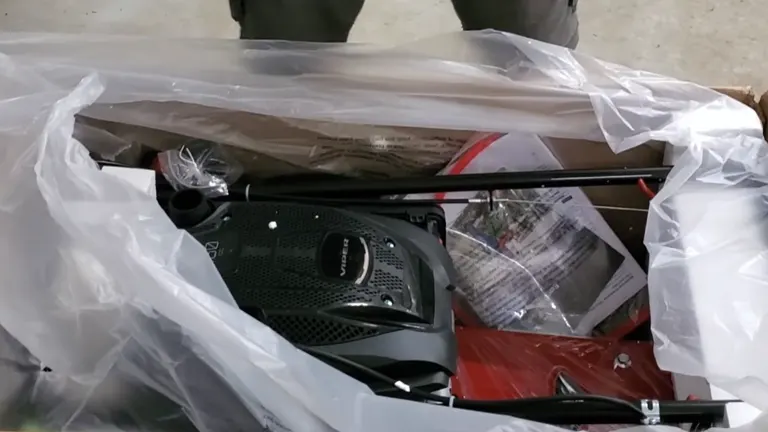
The Earthquake M605 makes a solid first impression right out of the box, exuding durability and promise. The assembly journey is intuitive, with a clear and concise manual guiding through the essential steps of preparing the trimmer for its first use. Attention to detail is crucial here, particularly regarding the oil and fuel specifications, ensuring a smooth setup process.
First Impressions in Action
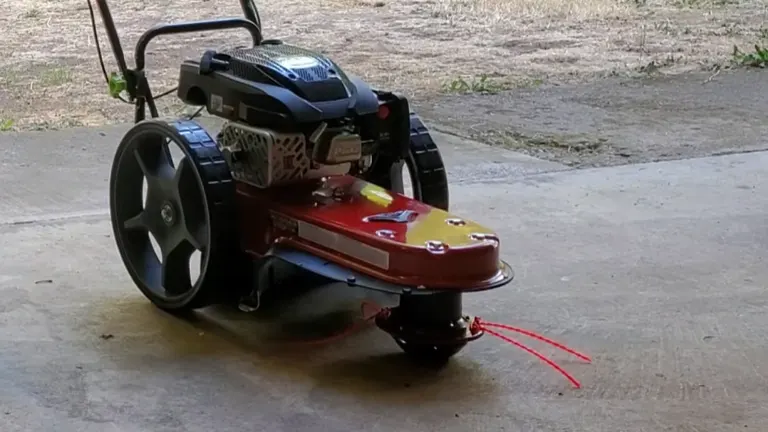
The initial startup of the Earthquake M605 string trimmer tested patience with a need for multiple primes and pulls, hinting at the robustness of the machinery. Once it roared to life, however, it excelled in navigating through the nooks and crannies of the landscape, effortlessly tackling tight spots and rugged terrain. This early performance showcased the trimmer’s potent blend of power and agility, setting a promising tone for its operational capabilities.
Power and Performance
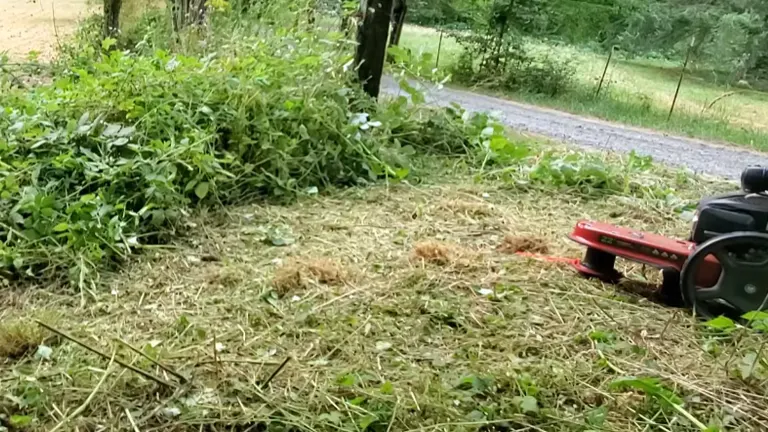
The 163cc 4-cycle Briggs and Stratton engine delivered a quiet yet forceful operation. With a 22-inch cutting path and sturdy airless wheels, the trimmer efficiently navigated thick grass and uneven landscapes, showcasing its capability in demanding conditions.
Challenges Encountered

The encounter with hidden wire in the undergrowth highlighted the importance of vigilance during operation. Adjusting the trimmer’s height facilitated the removal of entangled debris, emphasizing the trimmer’s adaptable nature.
Handling and User Experience
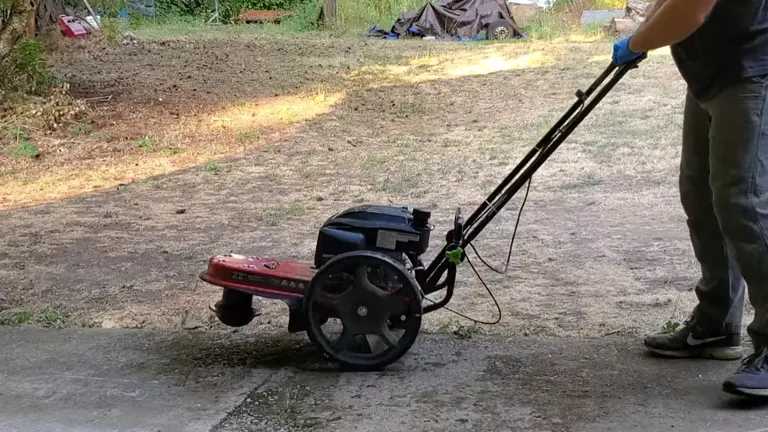
Despite its robust construction, the absence of self-propulsion requires physical effort to move the trimmer. However, this allows for precise control during the trimming process, with the durable construction promising longevity and resilience.
Pros and Cons of the Earthquake M605 Walk Behind String Trimmer
Pros
- The trimmer arrived five days early, which is convenient for eager users ready to start their landscaping projects.
- Its design is ideal for navigating tight spaces and around fencing where larger mowers can’t reach, offering great utility for precise trimming.
- The gas-powered engine ensures robust performance and extended run time, suitable for larger properties.
- Instructions are straightforward, facilitating a quick setup process.
- Performs well in cutting different types of grass, enhancing its versatility.
Cons
- Some confusion with oil fill due to manual discrepancies; a minor inconvenience that can affect the setup time.
- Issues with fuel filling leading to spillage can be a drawback, necessitating careful handling.
- The trimmer may require several attempts to prime before starting, which could be a hassle for some users.
- The trimmer can get entangled with hidden wires or thick vines like blackberries, posing a challenge and potentially halting the work.
- The default string might not be the best quality, and might need replacement for optimal performance, especially in dense vegetation.
Earthquake M605 Tips and Tricks
For the Earthquake M605 Walk Behind String Trimmer, here are some tips and tricks to enhance the user experience and extend the product’s lifespan:
- Regular Maintenance: Check and clean the air filter regularly to ensure optimal engine performance. Change the oil as recommended in the manual to keep the engine running smoothly.
- Proper Storage: Clean the trimmer after each use and store it in a dry, protected place. Avoid leaving it exposed to the elements to prevent rust and corrosion.
- Line Replacement: Always use the recommended line size for the trimmer. Experiment with different line types, such as round or multi-sided, to see which works best for your specific cutting needs.
- Height Adjustment: Adjust the cutting height to match the vegetation you are trimming. Higher settings can be used for rough terrain or thicker vegetation, while lower settings are suitable for regular lawn trimming.
- Use the Right Fuel: Stick to the recommended fuel type and octane level for the engine. Using the correct fuel helps in maintaining engine efficiency and longevity.
- Handle Adjustment: Adjust the handle to a comfortable height to reduce strain on your back and arms during extended use. Proper posture can improve control and reduce fatigue.
- Sharp Blades: Keep the cutting blades sharp for a clean and efficient cut. Dull blades can tear the vegetation, leading to an uneven trim and increased stress on the engine.
- Check for Obstacles: Before trimming, walk through the area and remove any large rocks, branches, or debris that could damage the trimmer or become dangerous projectiles.
- Use a Trimmer Harness: If available, use a harness to distribute the trimmer’s weight evenly across your body, reducing strain and improving maneuverability.
- Cool Down Period: After extended use, allow the trimmer to cool down before storing it. This can prevent heat-related damage to the engine and other components.
Comparative Analysis: Earthquake M605 vs. Cub Cadet ST 100
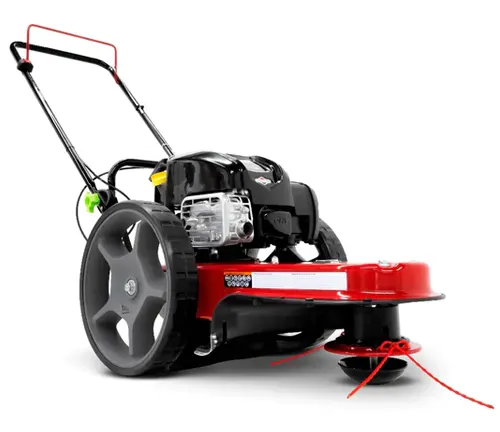 | 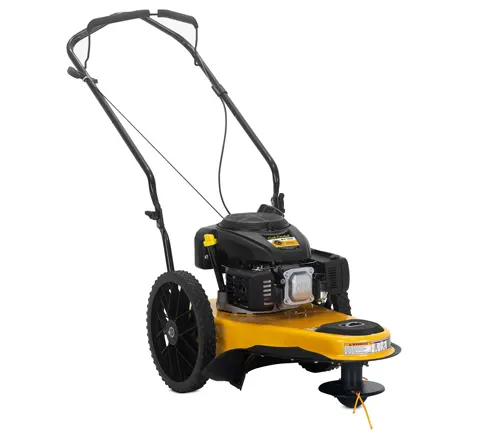 | |
|---|---|---|
| Model Number | 37676 | 25A-26KF710 |
| Engine Brand | Briggs and Stratton | Kohler HD775 |
| Engine Displacement | 163cc | 173cc |
| Start Type | Recoil | Recoil |
| Fuel Type/Capacity | 87+ Octane Unleaded | 1.0 qt |
| Drive System | Belt | Push |
| Cutting Swath | 22 in | 22 in |
| Wheel Diameter | 14.33 in | 14 in |
| Warranty | 5-Year Limited Product, 2-Year Engine | 3-Year Limited Product, 5-Year Engine |
Summary:
The Earthquake M605 and Cub Cadet ST100 are both capable string trimmers, each with unique features suitable for different environments. The Earthquake M605, with its 163cc Briggs and Stratton engine and belt drive system, is designed for rugged terrain, offering durability and ease of maintenance. Its large wheels enhance maneuverability across uneven landscapes. The Cub Cadet ST100, however, powered by a 173cc Kohler engine, is better suited for flatter terrains, with ergonomic controls for user comfort and a push drive system for straightforward operation.
While both models have a 22-inch cutting swath, the choice between them depends on the user’s specific needs: the Earthquake M605 is ideal for challenging outdoor conditions, while the Cub Cadet ST100 excels in more controlled, less demanding environments.
Conclusion and Verdict
The Earthquake M605 Walk Behind String Trimmer stands out as a powerful, reliable tool for extensive property maintenance. Its strength in tackling tough vegetation and navigating challenging terrains, paired with thoughtful design features, confirms its value. While it demands a hands-on approach and awareness of potential obstacles, the comprehensive warranty offers peace of mind, making it a solid investment for serious landscaping work.
FAQs
- What makes a walk-behind string trimmer better for rough terrain compared to a regular lawn mower?
Walk-behind string trimmers are designed with large wheels and a flexible cutting head to navigate uneven terrain, dense weeds, and around obstacles, making them more suitable for rough areas than standard lawn mowers. - Can walk-behind string trimmers handle both tall grass and small bushes?
Yes, they are equipped with powerful engines and durable cutting lines, allowing them to cut through tall grass, thick weeds, and even small brush and saplings. - How do you maintain a walk-behind string trimmer to ensure longevity?
Regular maintenance includes checking and replacing the cutting line, cleaning debris from the machine, ensuring the engine has clean oil, and inspecting for any loose or damaged parts. - Are there different types of cutting lines for walk-behind string trimmers, and how do they affect performance?
Yes, cutting lines come in various thicknesses and materials, affecting their cutting ability and durability. Thicker, more robust lines can cut through denser vegetation but may require a more powerful engine. - Can the height of the cutting swath be adjusted on walk-behind string trimmers like the Earthquake M605?
Many walk-behind trimmers have adjustable cutting heights to handle different types of vegetation and terrain, offering flexibility for various landscaping needs. - What safety precautions should be taken when using a walk-behind string trimmer?
Safety precautions include wearing protective gear like goggles, gloves, and long pants, checking the area for obstacles or hazardous materials before trimming, and never operating the machine without proper guards in place. - How does a walk-behind string trimmer handle very thick and woody vegetation?
While designed for toughness, extremely thick or woody vegetation might require multiple passes or a specialized blade attachment to effectively cut through the material. - What is the typical fuel efficiency for a gas-powered walk-behind string trimmer like the Earthquake M605?
Fuel efficiency varies based on engine size and operating conditions, but gas-powered trimmers are generally designed to run efficiently for extended periods, allowing users to cover large areas on a single tank. - Can walk-behind string trimmers be used on hills and slopes?
Yes, their design and large wheels allow for better stability and control on slopes compared to handheld trimmers, but it’s important to assess the steepness of the hill and the machine’s capabilities to ensure safe operation. - What is the best way to store a walk-behind string trimmer during the off-season?
The best way includes cleaning the trimmer thoroughly, draining or stabilizing the fuel, checking and cleaning the air filter, and storing it in a dry, protected space to prevent rust and damage.
Thanks for checking out our review of the Earthquake M605 Walk Behind String Trimmer! We’d love to hear your thoughts and experiences. Have you used this trimmer, or are you considering it for your yard? Drop a comment below and share your insights with us. Your feedback not only helps us, but it also aids others in making informed decisions. Don’t forget to share this review with anyone who might find it helpful. Happy trimming!

David Murray
Forestry AuthorI'm David Murry, a forestry equipment specialist with a focus on chainsaw operation. With over 13 years of experience, I've honed my skills in operating and maintaining a wide range of machinery, from chainsaws to log splitters. My passion for the outdoors and commitment to sustainable forestry drive my work, which emphasizes safety, efficiency, and staying updated with industry advancements. Additionally, I'm dedicated to sharing my expertise and promoting environmental awareness within the forestry community.

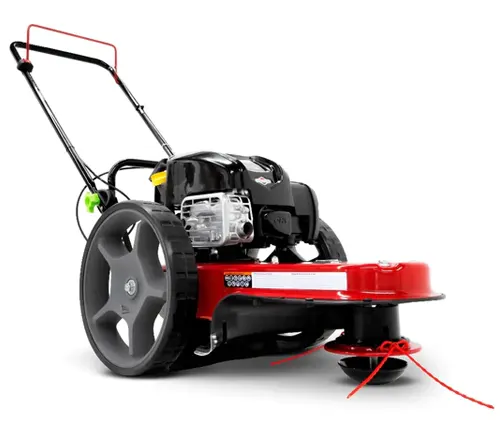

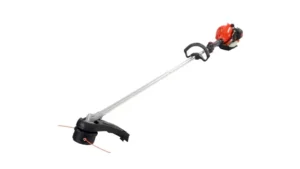
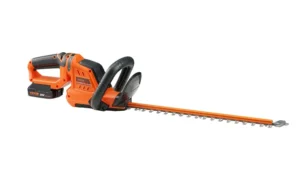
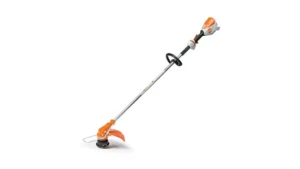
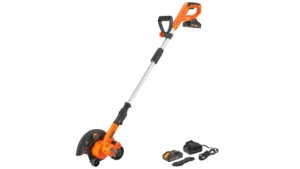
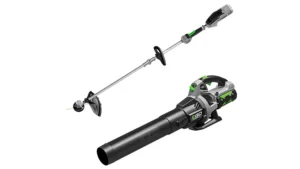
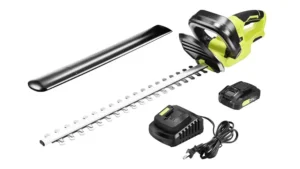
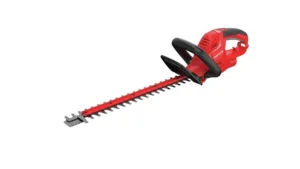

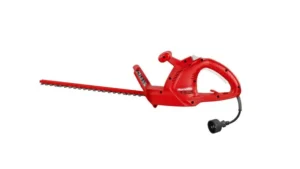
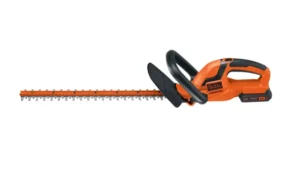

Leave your comment